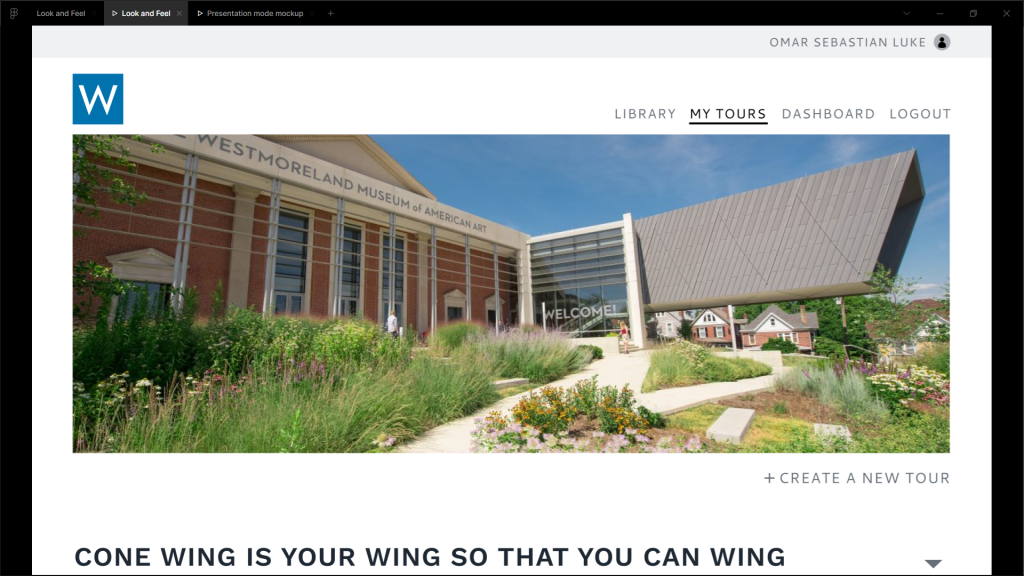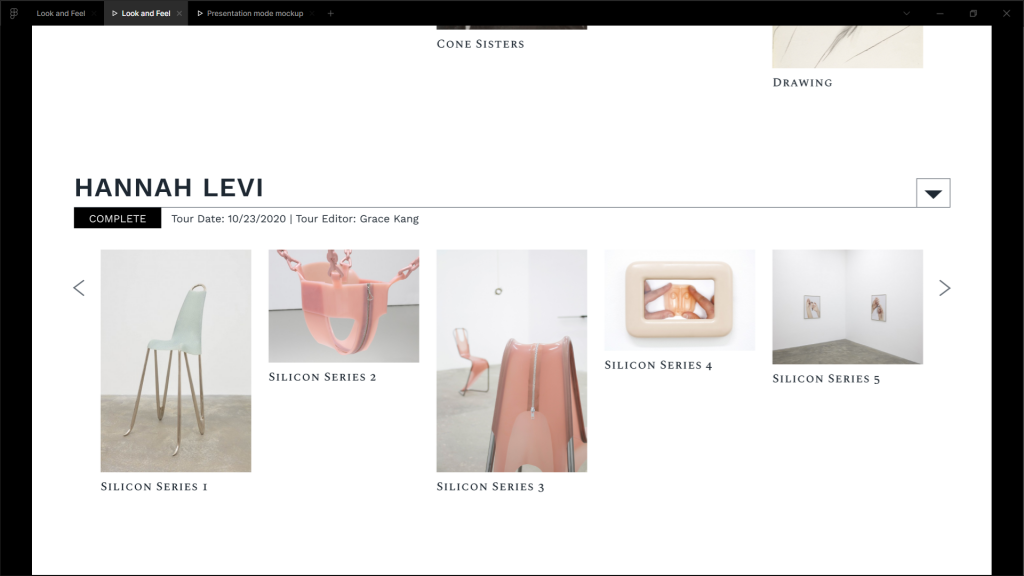Week 9: Usability playtests, Look and Feel design and implementation.
Following the feedback from halves, the team focused work into one of three categories
- Playtesting: showing the build to playtesters and synthesizing feedback into changes in the build. Playtesting will also develop onboarding materials and user-facing documentation after the usability of the website has been confirmed.
- Look-and-feel/Design: designing look and feel of guest-facing parts of the website and incorporating museum branding.
- Programming: implementing features and designs recommended by Design and tweaks recommended by playtesting.
With that in mind, progress for Week 9 was as follows.
Playtesting: Playtesting began coordinating usability tests with Rebecca Lombardi of the ETC and Amanda and Kelsie of the Frick. These three constitute ideal playtesters since they meet some or all of the following criteria:
- Low-to-moderately tech savvy:
Most museum staff identified as “not tech people” when spoken to in Week 7. While some level of technical proficiency is assumed for Educators using the Dashboard, ideally the onboarding documentation for educators should also accommodate those who are of very low tech savviness. - Professional Tour giver or public speaker:
All playtesters should have some familiarity speaking in public using presentation materials. This requirement can be waived if testing onboarding materials and if a Tour topic that the playtester is very familiar with is chosen (e.g. a family vacation or favorite movie). - Zoom familiarity:
All playtesters should have used Zoom at some point. No other video conferencing solutions were mentioned by the museums when spoken to in Week 7.
Once we establish whether the tool meets their needs (i.e. is able to organize uploaded media and present it to guests), the project can shift to onboarding materials for museum staff including videos, 1-page guides, and manuals.
Look-and-Feel/Visual Design: Based on Ana’s priorities, the website’s look and feel were developed now that core functionality was now playtestable. There are 3 Guest-facing parts of the website: the homepage, the tour page, and presentation view. Visual Design created mockups for the homepage, adapted them for the tour page and began work on Presentation view. Special attention was also paid to testing the different logos of each institution.


Programming: Programming focused on bugs and slight improvements as well as supporting audio/video files (a highly desired feature based on conversations in Week 7 with each museum partner). In depth notes are as follows:
Change Log v1.1.0 – Week 9 – 2020-10-30
Bugs
- [Website – Tour page] Fixed stop card drag and drop animation bug
- [Website – Security] Require user login to view any content
Improvements
- [Dashboard – Post editor] Changed title placeholder to “Add Stop/Tour Title”
- [Dashboard – Post editor] Changed post content placeholder to “Add Description..”
- [Dashboard – Post editor] Removed permalink, categories, and excerpt in the side panel
- [Dashboard – Top toolbar] Disabled unsupported buttons in toolbar (comments, +, new post)
- [Dashboard – Dashboard boxes] Disabled all dashboard boxes for all users
- [Website – Library page] Public library page UI first implementation with new visual design – layout, components, buttons, fonts and colors
- [Website – Stop Page] Changed top-right “x” button to go back to the previous page
- [Website – Stop Page] Removed the autoplay button on image gallery view
Features
- [Website – Tour page] Add left/right arrow buttons on each stop card to swap stop order with adjacent stop
- [Website – Stop page] Support uploading Video files and displaying in stop page
- [Website – Stop page] Support uploading Audio files and displaying in stop page
Goals for next week include:
- 5 Educator/Host Usability playtests
- Look and feel for presentation page
- Implementing initial look and feel
